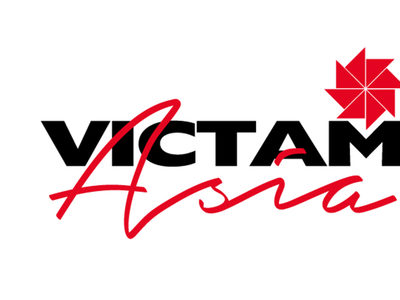Poland is one of Europe’s biggest grain producers, with a farm sector that has changed dramatically since it joined the European Union (E.U.) more than 10 years ago. Polish agriculture is now covered by Europe’s Common Agricultural Policy and Poland’s farming has restructured. It is a significant exporter of grains and processed products, while demand for biodiesel has encouraged production of oilseed rape.
According to the International Grains Council’s Grain Market Report, Poland’s total grains production in 2014-15 will be 30.4 million tonnes, up from 28.2 million in the previous year. Wheat production is put at 11.1 million tonnes, up from 9.6 million the year before. The barley crop is put at 3.3 million tonnes, up from 3 million. Oat production is put at 700,000 tonnes, up from 600,000. Poland is also predicted to produce 3.2 million tonnes of rye, just down on the previous year’s 3.3 million.
Polish rapeseed production in 2014-15 is put at 3 million tonnes, up from 2.8 in 2013-14.
According to the European Flour Millers’ Association, there were 435 flour mills in Poland in 2013 with a capacity of 7 million tonnes. The association breaks the total down into 40 mills with a capacity of less than 30 tonnes a day, 180 mills with a capacity of between 20 and 100 tonnes a day, and 215 mills with a capacity of over 100 tonnes a day.
Capacity usage in the industry is put at 65% and the supply of cereals to the flour milling industry is put at 4.2 million tonnes of wheat flour and 850,000 tonnes of rye flour.
“Production of cereals constitutes one of the main directions of agricultural production in Poland,” the country’s agricultural market agency ARR says in a report on the sector. “Poland ranks second in the European Union for cereal cultivation area (after France) and third for the harvest of cereals (after France and Germany). Cereals, according to the agency, make up almost 74% of the total sown area of the country.
“Popularity of cereal cultivation is connected with the favorable climate and soil conditions, fairly simple technology of production, relatively low labor consumption, easiness to store, transport and sale,” it says.
It points out the link between the cereals sector and animal production, especially pigs and poultry.
Wheat is the predominant cereal, but it also says that triticale and barley are taking an increasing share of production.
“In Poland, cereals are cultivated primarily on private farms,” it says. “These are predominant in the ownership structure of domestic agriculture.”
It puts domestic cereal demand at 27-28 million tonnes a year and stable. “The main factors causing fluctuations in domestic level of using cereals in particular years are cyclic fluctuations of pig stock and growing production of poultry.”
About 61% of cereals are used for feed, an average of 17 million tonnes a year, almost 80% of it fed on farm. The rest goes to satisfy growing demand for industrial feed blends.
The agency says that the high quality and competitive prices of Polish cereals make them attractive on the E.U.’s single market. Germany is by far the biggest customer, taking an average of 56% of Polish grain exports from 2009 to 2012.
“Wheat is exported mainly to Germany and Spain but also to countries in Africa (Algeria, Egypt),” the report said. “Rye is exported to E.U. countries, especially to Germany, the Netherlands, Finland, while maize is exported chiefly to Germany, the Netherlands and Denmark. In recent years, Germany and the Netherlands were among the primary recipients of Polish barley.
“In 2012, the export of products of secondary processing of cereals exceeded 2.6 times the 2004 export value, reaching 4.02 million tonnes,” it said. “The biggest share (70%) in the export of these products is that of bread and sugar confectionery.”
The export of products of primary processing is also rising, it said, putting the total in 2012 at 330,000 tonnes. “Wheat flour is among the main exported products of cereal milling. It is widely sought after by foreign importers,” it said. “The main recipients of wheat and meslin flour are Germany and Great Britain.”
According to a report from news agency PAP, quoted on the Polish news website, thenews.pl, a new grain storage warehouse has been opened at the Port of Gdynia, boosting the port’s storage capacity for the product by 60%. It means that the Baltic Grain Terminal in Gdynia can now hold up to 72,000 tonnes of wheat or other grains.
“This will result in the consolidation of the (Gdynia) terminal as the leader in handling the export of grain,” the report quoted Marek Kwiatkowski, head of the Baltic Grain Terminal in Gdynia, as saying. The terminal already has a 35% market share in Polish grain exports.
“Polish grain passing through Gdynia is primarily exported to Morocco, Algeria, Mauritania, Saudi Arabia, Jordan and Egypt, while in turn soybeans from South America are imported through the Port,” the report said.
Ten years of CAP success
The European Commission called a report on the development of Poland since it joined the E.U. in 2014 and came under Europe’s Common Agricultural Policy, “Poland and the CAP: 10 Years of Success.”
“Ten years ago, on May 1, 2004, the E.U. enlarged from 15 to 25 Member States (and with two subsequent enlargements to 28),” it said. “The balance of these 10 years of E.U. membership is clearly positive for agriculture and the rural economy in the Poland.”
Since 2003, the number of farms in Poland has fallen by 30%.
“Farms in Poland have almost doubled in economic size since 2003. It is one of the most dynamic countries with the value of production/holding showing 14.2% growth per year,” it said. “Over the period 2005-13, total CAP spending in Poland was €33 billion.
“Polish farmers received €17 billion in direct aids and market measures to support farm income (Pillar I), and some €16 billion was spent modernizing agriculture, making it more sustainable and developing rural areas (Rural development or Pillar II).”
Biodiesel encourages rapeseed production
An attaché report on the oilseeds sector made plain how much impact biodiesel has had. “More than half of the domestic production of rapeseed is used for biofuel purposes,” it said. “Rapeseed is cultivated by 100,000 farms. Over the last decade rapeseed production has doubled, and this is mainly due to the commencement of the use of rape as fuel.
“Planted acreage increased during this time, but the main reason for growing crops was the improvement in production efficiencies. In 2013, production of methyl esters amounted to 650,000 tonnes. The production of ethanol has been stable at about 200,000 tonnes. Only 1.8% of cereals have been used for this purpose last year, but in the case of corn it is about one-fifth of the market in Poland.
Negative attitude toward biotech
Poland’s government has taken an unsympathetic attitude toward genetically modified crops. “As of Jan. 28, 2013 the Polish government banned the cultivation of E.U.-approved GE Mon-810 maize and the Amflora potato through an amendment to the Polish Seed Act,” the attache reported. “Currently Poland continues to import feeds enhanced through biotechnology. On Jan. 1, 2017, a ban on the import of such feed is scheduled to enter into force. Originally this ban was to apply in 2008, but was delayed first until 2013 then again until 2017 due to strong opposition from Poland’s livestock industry. “While a majority of Polish scientists and many farmers are open to newer technologies, the subject of agricultural biotechnology has become much politicized in Poland,” the attaché said. “Studies conducted between 2000-12 shows that 70% of the society is against application of agricultural biotechnology in Poland.”
Key Facts
Capital: Warsaw
Population: 38,346,279 (July 2014 est.)
Religions: Catholic 87.2% (includes Roman Catholic 86.9% and Greek Catholic, Armenian Catholic, and Byzantine-Slavic Catholic .3%), Orthodox 1.3% (almost all are Polish Autocephalous Orthodox), Protestant 0.4% (mainly Augsburg Evangelical and Pentacostal), other 0.4% (includes Jehovah’s Witness, Buddhist, Hare Krishna, Gaudiya Vaishnavism, Muslim, Jewish, Mormon), unspecified 10.8% (2012 est.).
Location: Central Europe, east of Germany.
Government: Republic. Chief of state: President Bronislaw Komorowski (since Aug. 6, 2010); head of government: Prime Minister Donald Tusk (since Nov. 16, 2007).
Economy: Poland has pursued a policy of economic liberalization since 1990 and Poland’s economy was the only one in the E.U. to avoid a recession through the 2008-09 economic downturn. Although E.U. membership and access to E.U. structural funds have provided a major boost to the economy since 2004, GDP per capita remains significantly below the E.U. average while unemployment continues to exceed the E.U. average. The government of Prime Minister Donald Tusk steered the Polish economy through the economic downturn by skillfully managing public finances and adopting controversial pension and tax reforms to further shore up public finances. While the Polish economy has performed well over the past five years, growth slowed in 2012 and 2013, in part due to the ongoing economic difficulties in the euro zone. Short term, the key policy challenge will be to consolidate debt and spending without stifling economic growth. Over the longer term, Poland’s economic performance could improve if the country addresses some of the remaining deficiencies in its road and rail infrastructure, business environment, rigid labor code, commercial court system, government red tape, and burdensome tax system.
GDP per capita: $21,100 (2013 est.) inflation: 1% (2013 est.); unemployment: 10.3% (2013 est.).
Currency: Zlotych (PLN): 3.484 zlotych equals 1 U.S. dollar (Dec. 22, 2014).
Exports: $202.3 billion (2013 est.): machinery and transport equipment 37.8%, intermediate manufactured goods 23.7%, miscellaneous manufactured goods 17.1%, food and live animals 7.6%.
Imports: $207.4 billion (2013 est.): machinery and transport equipment 38%, intermediate manufactured goods 21%, chemicals 15%, minerals, fuels, lubricants, and related materials 9% (2011 est.).
Major crops/agricultural products: Potatoes, fruits, vegetables, wheat; poultry, eggs, pork, dairy.
Agriculture: 4% of GDP and 12.9% of the labor force.
Internet: Code: .pl; 13.265 million (2012) hosts and 22.452 million (2009) users.





